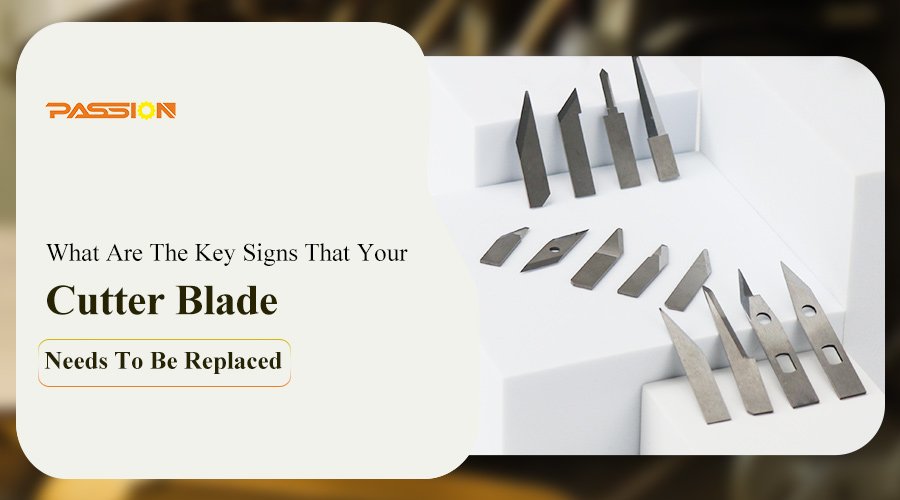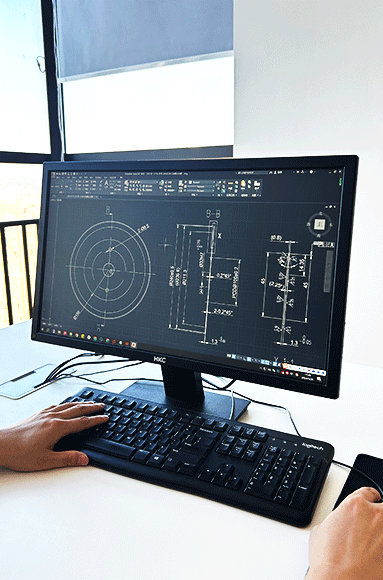Cutter blades play a crucial role in maintaining smooth operations in various industrial applications. However, even the highest-quality blades can lose their edge over time. It’s essential to recognize the signs that indicate when a cutter blade needs replacement. Failure to replace a worn-out blade in time can lead to poor performance, potential damage to materials, or even machine failure.
In this article, I’ll walk you through the key signs that your cutter blade may need to be replaced, ensuring your equipment remains efficient and reliable.
Key Signs That Your Cutter Blade Needs To Be Replaced
Key signs indicating that your cutter blade needs to be replaced include decreased cutting performance, visible damage, burn marks or discoloration, vibration and noise, material buildup, frequent binding or sticking, excessive wear, and loss of blade tension. Pay attention to these indicators to avoid unproductive downtime and ensure your cutting equipment performs at its best.
How Do I Know If I Need A New Saw Blade?
When it comes to saw blades, the most noticeable signs that they need to be replaced are dull or chipped teeth. If you notice that your cuts aren’t as smooth as they used to be or the blade starts to produce smoke or burn marks during cutting, it’s time for a replacement. In addition, excessive vibration or unusual noises during operation are also clear indicators that the saw blade is no longer in its optimal condition. If your saw blade is showing any of these signs, it’s crucial to replace it promptly to maintain cutting precision and prevent damage to your equipment.
When Should I Replace My Trimmer Blade?
Trimmer blades wear down faster than you think. If your trimmer blades aren’t working well or are cutting rough and uneven, it’s probably time to replace them. Manufacturers typically recommend replacing the blade every 1-3 months, depending on the frequency of use. Even if you’re not using your trimmer daily, regular inspection for signs of wear, such as dullness or damage, will help you avoid cutting inefficiencies and potential material waste.
How Do I Know If My Saw Blade Is Bad?
When a circular saw blade is nearing the end of its useful life, a number of signs will appear. You may start to notice uneven cuts, especially if the blade teeth are worn down or chipped. Additionally, if you hear excessive vibration during cuts or see burn marks on the material being cut, it’s a clear sign the blade has lost its sharpness or alignment. In some cases, you might also hear a high-pitched noise as the blade struggles to cut efficiently. If these issues arise, it’s time to replace the saw blade to avoid cutting inaccuracies and further wear on your equipment.
What Are Some Signs That You Need To Replace The Blade Or Should Not Be Used?
Several factors indicate that a blade is no longer usable. For instance, leaving streaks on the material or squeaking noises during operation are both signs that the blade is worn out. Additionally, if you experience chatter (vibrations that cause the blade to move erratically), the blade’s performance is compromised, and continuing to use it could result in poor-quality cuts or damage to the materials you’re working with. At this point, it’s advisable to replace the blade to avoid negative outcomes.
How Can Excessive Wear Affect Your Cutter Blade?
As with any industrial equipment, cutter blades are subject to wear and tear over time. Excessive wear typically occurs at the cutting edge and can cause the blade to become dull. A dull blade results in slower cutting speeds, reduced efficiency, and uneven cuts, which can negatively affect the quality of the materials being processed. In severe cases, continued use of excessively worn blades can lead to blade failure or damage to the cutting machine itself. Regular inspection and replacement of blades when they show signs of wear are essential to maintaining operational efficiency.
Why Does Material Buildup Signal A Need For Blade Replacement?
Material buildup, such as adhesive, coatings, or debris, can accumulate on the blade during use. This buildup can cause the blade to overheat, which compromises its cutting performance and can lead to damage to both the blade and the material being cut. Frequent cleaning of the blade is essential to prevent such buildup, but if the material continues to adhere despite cleaning, the blade may be past its prime. Regularly inspect your blades for buildup and replace them if cleaning no longer restores optimal cutting performance.
What’s The Role Of Blade Tension In Cutter Blade Longevity?
Blade tension plays a critical role in ensuring that the blade cuts smoothly and evenly. Over time, a blade can lose its tension, leading to misalignment and uneven cuts. This results in poor cutting performance and potential damage to both the blade and the material being cut. If you notice your cutter blade’s tension is inconsistent or the cuts are no longer uniform, it may be time to replace the blade. Ensuring that the blade is well-maintained and properly tensioned can extend its useful life.
In conclusion, recognizing the signs that your cutter blade needs to be replaced—such as decreased performance, visible damage, material buildup, and vibration—will help you maintain peak cutting efficiency and prevent unnecessary downtime. Regular inspection and timely replacement of your blades are essential for avoiding costly repairs and ensuring that your equipment continues to function at its best.
By paying attention to these signs, you’ll ensure that your cutting tools remain sharp and ready for any industrial application.



